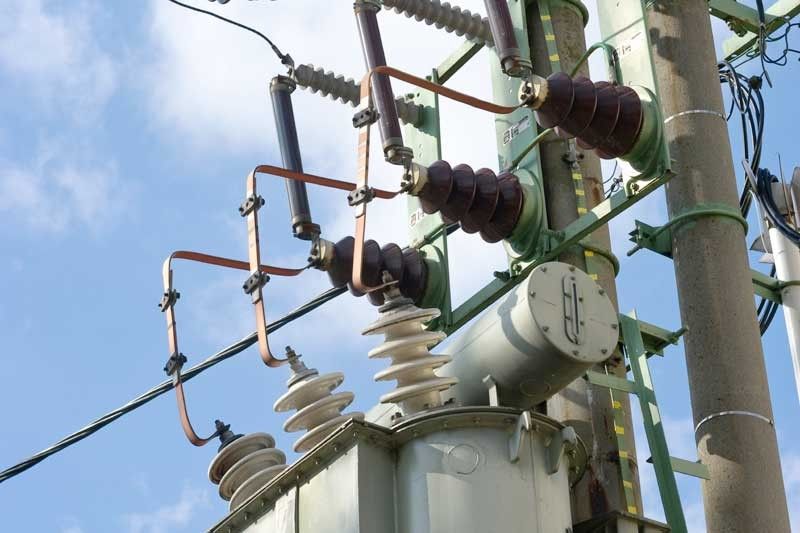Report on possible collusion among power operators out soon

MANILA, Philippines — The results of the joint probe of the Department of Energy (DOE) and the Philippine Competition Commission (PCC) into possible collusion among power plant operators in connection with the spate of blackouts in Luzon earlier this month are expected to come out next week.
Sen. Sherwin Gatchalian, chairman of the Senate committee on energy, said DOE and PCC officials assured him during a meeting Thursday that they are thoroughly looking into the sudden and unexpected breakdown of at least six major power plants in Luzon.
Gatchalian said the supposed plant breakdowns resulted in the loss of at least 1,400 megawatts (MW) of power in Luzon that triggered the series of blackouts, affecting millions of households, establishments and critical infrastructure like hospitals.
“What they (DOE and PCC officials) told me is this (probe into possible collusion) involves a lot of technical issues, including engineering and market aspects, so they are also being careful,” Gatchalian said.
He said the two agencies are calling their probe a fact-finding mission to avoid involving – at least for the meantime – legal matters pending the results of their examination on whether there was anti-competitive behavior among industry players.
Gatchalian said the hot and dry season has always been an opportunity for unscrupulous members of the power industry to rake in profits from the power outages.
He said the motivation for collusion comes when thinning power reserves prompt industry players to buy power from the Wholesale Electricity Spot Market (WESM), which sells at higher prices that are passed on to consumers.
“There are red flags that the authorities should be on the look out for, like when there are ‘red alerts’ or ‘yellow alerts’,” the senator said, referring to the National Grid Corp. of the Philippines (NGCP)’s announcement of critical levels of power supply.
Another window for opportunists, Gatchalian said, is when the DOE makes projections on power supply that “incentivizes some players to game the market.”
The NGCP put Luzon grid on a series of seven red alerts in April alone, which is the most recorded since 2015. Ten yellow alerts were raised in the first half of 2019 alone, particularly on March 5 to 8, April 1-5 and 8.
Yellow alert
The NGCP again announced a yellow alert status for the Luzon grid yesterday.
In an advisory, the NGCP said the alert status was raised from 10 a.m. to 4 p.m. In an update, it said the alert was lifted at 4:55 p.m. “due to declining system demand.”
Officials explained that a yellow alert means there are not enough reserves to cover the largest running generating unit at the time, but does not necessarily lead to power outages.
The Luzon grid’s available capacity is 11,544 MW, while demand is at 10,632 MW.
The NGCP also reported an unscheduled power interruption affecting parts of Pampanga at 10:57 a.m.
“Line patrol along Mexico-Calumpit 69kV line is ongoing to determine the cause of power interruption and implement restoration works immediately,” it added.
Energy Undersecretary Felix William Fuentebella earlier said the supply shortage in the power grid is due to the “delayed entry of plants affected by (last Monday’s) earthquake.”
The Luzon power grid lost a total of 1,527 MW due to downed power plants and facilities operating on limited capacity, data from the DOE showed.
During the committee’s hearing on Thursday, Energy Regulatory Commission (ERC) chair Agnes Devanadera said the ERC already started with initial data-gathering on the series of alerts and outages.
“There appears to be a connection of the age of the plant and the outage,” Devanadera said.
Laban Konsyumer Inc. (LKI) president Vic Dimagiba said the reserve capacity of plants should be given priority, and went on to illustrate how Singapore has as much as 50 percent reserves.
According to Dimagiba, there are pending applications before the ERC on power supply agreements (PSAs) that can be prioritized to avoid shortfall in supply.
“The status of the pending PSAs, especially those of baseload plants, should be looked into. Investors cannot start just because of sheer failure to get approval,” Dimagiba said.
He said the ERC should immediately act on the applications and decide whether to approve, “for the industry to move forward.”
Jay Layug, former chair of the National Renewable Energy Board, appealed to the government to facilitate permits.
“If only we can build more plants, we can avoid situations like this,” Layug said. – With Catherine Talavera
- Latest
- Trending
































